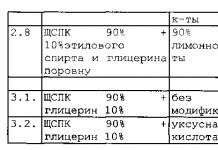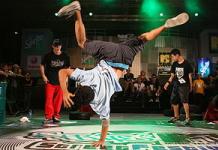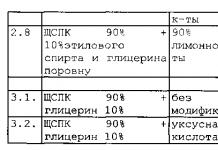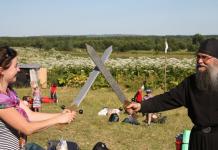This article schematically outlines the concept of speech restoration in patients with motor aphasia V.V. Oppel, and also provides the opinions of other domestic authors on the problem of using direct methods of disinhibition of the pronunciation side of speech. The importance of using individually oriented vocabulary for effective correction and high-quality speech restoration is shown.
The use of direct (disinhibiting and stimulating) methods in restoring speech in patients with motor aphasia.
The problem of speech rehabilitation of patients with motor aphasia is one of the most pressing in aphasiology, since speech impairments in this form of aphasia are often very severe and persistent, and the patient may have no speech for many years. However, properly organized rehabilitation training can restore the patient's ability to speak.
Working to restore lost function, we, aphasiologists, rely on one of the most important properties of the brain - the ability to compensate. Both direct and bypass compensatory mechanisms take part in this process, which determines the presence of two main types of directed effects.
The first is associated with the use of direct disinhibitory methods of work, which are designed to use reserve intrafunctional capabilities, to “exit” nerve cells from a state of temporary oppression, associated, as a rule, with changes in neurodynamics (speed, activity, coordination of the flow of nervous processes).
It is important that direct teaching methods are designed to involuntarily recall premorbidly strengthened skills in the memory of patients. Bypass methods, on the contrary, involve the voluntary development of ways of perceiving speech and one’s own speaking. This is due to the fact that bypass methods require the patient to implement the affected function in a new way, which differs from the usual one, strengthened in premorbid speech practice.
The difference in the structure of oral speech impairment in afferent motor and efferent motor aphasia is obvious, however, it is advisable and most effective to begin rehabilitation training for both forms of motor aphasia with direct (disinhibiting and stimulating) methods of work.
Analyzing the domestic literature on the problem of speech restoration in aphasia, we can conclude that the method of disinhibiting the pronunciation side of speech occupies a strong place in the practice of rehabilitation of patients with motor aphasia.
B.G. Ananyev, V.M. Kogan, V.V. Oppel proposed restoring speech by using all the patient’s residual abilities to speak, read, etc., placing him in the conditions of “a direct actor (subject or object) of communication.”
V.V. Oppel considered disinhibition as the main way to restore speech communication, as a way to create situations that cause the patient to speak from the first days of the disease, as a way to prevent the consolidation of a pathological condition expressed in various forms and degrees of agrammatism.
The persistent pathological state of the speech of patients in the form of “secondary agrammatism” was regarded by V.V. Oppel as the result of improper organization of the initial recovery period (this is the late start of speech therapy classes, and insufficient attention to all the speech capabilities of the patient, and early active speech training, and ignoring individual personality traits of the patient, etc.)
Attaching great importance to the initial recovery period, V.V. Oppel developed a whole system of exercises and techniques aimed at disinhibiting speech, bringing the patient to a level, although with defects, but still a speaking person.
In tasks and exercises, persistent speech automatisms that were characteristic of the speech of a particular patient in premorbid should be used. Suitable for this are the patient’s favorite songs, a “hobby” dictionary, well-known proverbs and sayings, stable phraseological units, everyday “catchphrases” - everything that can prove to the patient that he can speak. Basically, this stage of work is carried out as finishing words or sentences through intonation and melodic emotional influence.
As soon as the patient begins to speak the above quite freely, V.V. Oppel recommended moving to more complex agreements based on direct associations, by contrast and by analogy. This section of the work is more complex and requires the patient to produce independent speech. The patient must always be oriented to listen to whether what he is saying sounds correct. Both of these sections are carried out at a sufficient pace, but without piling tasks on top of each other, but continuously expanding the speech material both in content and form, using a variety of figures of speech and a wide vocabulary, without excluding any parts of speech.
In the process of this work, the patient is brought to dialogue, which Oppel proposed to restore according to the following scheme:
- repetition by the patient of a ready-made formula for answering the question posed;
- answers to questions when prompting the patient: the first syllable of each word of the answer, the first word of the answer, and, finally, when prompting only the first sound of the answer;
- answers to questions that include the words needed to answer, with a choice of two, three or more words;
- spontaneous answers to asked questions;
- questions asked by the patients themselves.
According to V.V. Oppel, the process of speech restoration should be an active, conscious, hard work only for a speech therapist who closely monitors all the patient’s speech capabilities, sensitively reacts to the slightest changes in his speech and selects exercises for the patient that would help him get out of the pathological condition as much as possible more invisible to him. Patients should perceive classes with a speech therapist as an interesting, fascinating conversation, during which he fulfills certain requests of the speech therapist.
This is a schematic presentation of the concept of speech restoration in aphasia by V.V. Oppel, which does not contradict the general position on the need to individualize restorative techniques for each specific patient.
I repeat that Oppel considered disinhibition as the main way to restore speech communication.
However, many authors (L.S. Tsvetkova, M.K. Shokhor-Trotskaya) consider the method of disinhibition of the pronunciation side of speech as the initial stage of restorative training, at which the most automated forms of speech used for special training are restored.
M.K. Shokhor-Trotskaya notes that “..disinhibition of expressive speech with the help of automated speech sequences in patients with motor aphasia at the early stage of rehabilitation training helps to activate the ability of patients to pronounce words and short phrases.”
L.S. Tsvetkova in her book “Rehabilitation training for local brain lesions” writes that it is necessary to take into account the fact that with each cortical lesion, the most highly organized forms of activity, the implementation of which was associated with the affected area, suffer first, while the more elementary organized forms of those the same processes can remain relatively intact.
As H. Jackson wrote, “the loss ... of the more arbitrary implies the preservation ... of the most automated.”
Therefore, the most effective way of restorative training requires the speech therapist to begin his work by disinhibiting the patient’s involuntary speech processes (habitual speech stereotypes, singing, naming the days of the week and months in direct order, etc.).”
A sick person always has extensive social experience in speech and intellectual activity in the past. According to the idea of L.S. Vygotsky that, in contrast to development, which is directed “bottom up,” disintegration has a direction “from top to bottom”; actions that were strengthened in previous experience and occur at a less arbitrary level are most often preserved.
Therefore, the use of the residual capabilities of the most strengthened forms of activity is one of the important principles of learning.
A.N. Leontyev and A.V. Zaporozhets pointed out a significant effect in restoring the movement of a hand damaged by a wound if the patients’ attention was distracted from the process of movement itself, and the movement was included in well-automated objective actions. There are also cases of actualization of entire sentences when they are included in the strengthened rhythmic-melodic structure of speech.
Verbal methods of speech disinhibition include:
- Method of speaking ordinary and automated speech. Based on auditory stimulation of the kinesthetic apparatus, certain words and the ability to pronounce them may emerge in patients;
- Reading poems, which contributes to the actualization of strengthened speech on a mnestic and rhythmic-melodic basis;
- Dialogue method. The procedure for applying this method requires the selection of material: frequency vocabulary, simple grammatically, a known situation. Before the dialogue, it is necessary to use the “introduction to context” method so that the patient knows about the topic of the conversation.
- Conversation method, which uses familiar questions and answers. The topics of conversation should be frequent, familiar to the patient, and emotionally rich - about home, family, work or hobbies. Ordinary and automated speech is widely used here.
- Digital method, which also helps to disinhibit the words that have been reinforced in the patient’s speech - the names of numbers and numbers.
All of these methods operate on the principle of switching the patient’s attention from speech, making it not the subject of action, but the goal, the result of this action.
In all these methods, emphasizes L.S. Tsvetkov, there is another psychological mechanism that contributes to the disinhibition of speech - this is the restoration of the modus operandi (according to L.S. Vygotsky), i.e. the usual method and mechanism of action, in our case the articulatory apparatus.
L.S. Tsvetkova emphasizes that the disinhibition of speech begins with its most strengthened forms. It is also essential to include remnants of emotional speech in the work - reproducing the names of people close to the patient, words associated with a favorite activity or profession. A conversation about events close to the patient helps to revive the patient’s previous speech connections, temporarily inhibited by the pathological state of the brain. This creates the conditions for the patient to begin to emerge whole sayings associated in his past experience with a certain type of activity.
“Very useful,” notes L.S. Tsvetkova, is technique of highlighting the rhythmic-melodic structure of a phrase, which remains most preserved in patients with afferent motor aphasia. Recreating the intonation structure of speech by simulating interrogative, affirmative, exclamatory and other intonations with the voice facilitates the disinhibition of involuntary speech.”
Thus, disinhibition methods should be used with mandatory consideration of the individual characteristics of the patient (age, education, profession, interests), i.e. taking into account the patient's premorbid vocabulary.
This point is also emphasized by T.G. Wiesel. She writes that in the initial stage of the disease, as well as at the most severe degree of severity of the speech defect, it is relevant for both forms of motor aphasia to use direct (disinhibiting and stimulating) methods of work, which are designed to revive premorbidly strengthened skills in memory. This allows you to restore the skill in a natural way - based on secondary automation.
Wiesel emphasizes that a special task is the selection of lexical and phraseological material that meets the age parameters of patients, as well as their individual “linguistic portrait”.
T.G. Wiesel points out that the products of the right hemisphere are of a consolidated nature and are distinguished by the fact that they are “ready-made”, such as, for example, common automatisms and speech cliches. Some of these stamps are speech sequences (one, two, three...; Monday, Tuesday...); commonly used etiquette expressions, emotional exclamations. Other speech cliches are individual and associated with previous speech practice (professional expressions, sayings, etc.).
Speech production that has reached the level of strengthening to “move” to the right hemisphere is different for all people. For one person, purely everyday speech prevails, for another - slang, for a third - business, for a fourth - artistically colored, etc. It is these statements endowed with the characteristics of an individual or their typical models that are stored by the right hemisphere of the brain. They characterize the “linguistic portrait” or “linguistic type” (professor, hooligan, joke teller, etc.) of a particular person, and not only a normal speaker, but also one with pathological speech.
Thus, the method of disinhibiting the pronunciation side of speech occupies a strong place in the practice of rehabilitation of patients with motor aphasia. Using this method, the aphasiologist must pay great attention to the selection of lexical material: first, determine the so-called “linguistic type” of the patient, determine which phrases, phraseological units, etc. in the patient are most automated and also cause a positive emotional response. This will affect the effectiveness of restoration of speech function, as well as the psychological and emotional state of the patient.
Babkova E.A.,
speech therapist
For a teacher-speech therapist, familiarity with the neuropsychological method of analyzing the insufficiency of speech and other forms of mental activity of children with speech disorders is of great practical importance. This method allows, firstly, to identify the psychophysiological characteristics (factors) that underlie certain abnormal manifestations, secondly, to isolate a system of primarily intact links in the mental activity of children, and thirdly, to determine optimal (adequate to the psychophysiological structure of the defect) ways an individualized approach to them in the process of correctional education.
The use of this method is based on the understanding of any human mental activity as a complex functional system, the implementation of which is ensured by a whole complex of jointly working brain devices, each making its own contribution to the provision of this functional system. Using this method, a structural, syndromic analysis of disturbed mental processes is carried out, which is the main method of neuropsychological research.
Alexander Romanovich Luria, a famous neuropsychologist, made a huge contribution to the development of this method. The main role in this method is A.R. Luria does not devote himself to isolating individual symptoms, but to describing a whole symptom complex of mental changes that occur with local brain damage, and isolating in this symptom complex qualitatively homogeneous (general) features that make up a specific quality - a factor that has a certain local significance. For example, loss or weakening of the “speech-auditory factor” of mental activity (lack of acoustic gnosis, incomplete understanding of addressed speech, weakness of auditory-speech memory, instability of auditory control and attention) clearly indicates the presence of damage or dysfunction of the brain structures of the left temporal region (in right-handers ). The weakening of the “dynamic factor” of mental activity (difficulties in the kinetic organization of various mental operations and actions: motor, speech, mental, etc.) has a direct connection with the morphofunctional deficiency of the anterior premotor areas of the brain. Violation of the “spatial factor” indicates an unfavorable state of the parietal-occipital parts of the cerebral cortex.
Such a neuropsychological factor analysis of the syndrome allows not only to determine the localization of the focus, but also to identify the internal psychophysiological structure of the defective function. For example, with tumor damage to the motor “speech zones” in children, pathological inhibition of speech traces, changes in the given word order, contamination, and perseveration are detected. When sensory “speech zones” are damaged, a neuropsychological examination allows us to identify symptoms of amnestic aphasia, auditory-speech memory impairment, etc. in such children.
With damage to the left hemisphere, neuropsychologically, various forms of apraxia are clearly identified in children:
- 1. When the parietal region is damaged, a violation of the kinesthetic organization of movements is detected;
- 2. With frontal-temporal lesions, disorders of dynamic praxis arise in the form of slowness, disautomation, difficulties in switching from one movement to another; when testing auditory-motor coordination, perseverations and disturbances in the voluntary execution of a series of rhythmic movements are revealed;
- 3. With parieto-occipital lesions, specific violations of spatial praxis are revealed.
Thus, the data presented are convincing confirmation of the great diagnostic capabilities of the neuropsychological way of examining speech disorders in children.
Scheme of an adapted neuropsychological study of preschool children
|
Description of samples |
|
|
KINESTHETIC PRAXIS Execution according to a visual pattern |
|
|
|
|
4 – 6. The same with the left hand |
|
|
Execution according to a tactile pattern |
|
|
7. Fingers clenched into a fist, 2nd and 3rd fingers extended |
|
|
8. Fingers clenched into a fist, 2nd and 5th fingers extended |
|
|
9 – 10. The same with the left hand |
|
|
If the child cannot find the required set of movements, moves his fingers, helps with the other hand, the movements are diffuse, and he puts up others in addition to the necessary fingers, then the child has a violation of the visual-spatial organization of movements (one-sided spatial agnosia, disruption of interhemispheric interaction). |
|
|
SPATIAL PRAXIS |
|
|
|
|
|
|
|
|
|
|
|
|
If a child cannot reproduce the spatial position of the hand, cannot find a given part of the face or body, impulsively reproduces given tests, or cannot cope with the task at all, then he has a violation of the voluntary regulation of movements and a violation of interhemispheric interaction. |
|
|
DYNAMIC PRAXIS Change of 3 positions of the hand |
|
|
If a child cannot reproduce the spatial direction of movements, then we can talk about a violation of reciprocal coordination. |
|
|
AUDITORY - MOTOR COORDINATION |
|
|
If a child cannot reproduce the rhythm according to a given pattern, does not grasp the structure of the rhythm, then one can judge about a violation of auditory perception, weakness of acoustic traces, and a violation of voluntary regulation of movements. |
|
|
STEREOGNOSIS |
|
|
If the child does not recognize the palpable object, then one can judge that the nominative function of speech is impaired. |
|
|
VISUAL GNOSIS |
|
|
If a child cannot name an image or forgets the names of objects, then one can judge about a violation of visual perception, a violation of the nominative function of speech, and a violation of thinking. |
|
|
Sensory function of speech |
|
|
Motor function of speech |
|
|
|
|
|
|
|
|
If the child does not understand the instructions, cannot show the named object, does not differentiate close phonemes (b - p, g - k, d - t, etc.), then we can judge about a violation of the sensory function of speech; finds it difficult to pronounce individual words, searches for the necessary articulation, confuses sounds that are similar in pronunciation (l - n - d, b - m, etc.), then one can judge about a violation of the kinesthetic basis of speech; if a child cannot switch from one articulation to another, gets stuck on individual sounds, or perseverates sounds, then we can talk about a violation of the kinetic organization of speech; If a child does not understand grammatical structures, uses cases and prepositions incorrectly, then the child has a violation of the grammatical structure of speech. |
|
When examining a speechless child, it is not always possible to accurately name a speech diagnosis. It is difficult to distinguish the primary disorder and its secondary manifestations; additional dynamic study is necessary. As practice shows, recently situations have become more frequent when a child has a combined disorder, for example, slight hearing loss and delayed psycho-speech development; cerebral palsy, dysarthria and motor alalia; secondary autism in cerebral palsy, etc. In addition, speechless children often have neurological symptoms - perinatal encephalopathy, minimal brain dysfunction, symptoms of hypo- and hyperexcitability, hypertensive-hydrocephalic and cerebrasthenic syndrome. With all the diversity of neurological symptoms, speechless children are characterized by a decrease in mental activity, attention, memory, and a lack of purposeful activity.
It happens that it is very often difficult to determine what prevails - the child’s inability or unwillingness to use his speech abilities. Our task is to outline the prognosis on which the social adaptation of a non-speaking child depends. (Will the child speak? How long will it take? Will the child be able to attend school? etc.)
It is very important not to miss the early, sensitive age for the development of compensatory capabilities of the child. This will help develop not only the basics of communication in a non-speaking child, but also develop mental functions, the child’s personality as a whole, prevent secondary deviations, and promote integration.
Having summarized fifteen years of experience in teaching speechless children, we propose to begin stimulating children’s speech with visual-spatial perception. We establish emotional contact with the child, trying to make eye contact as often as possible, holding the gaze whenever possible. At this stage, you can offer various games to help relieve stress. We form a positive emotional attitude towards working together with an adult (assembling puzzles, pyramids, disassembled toys, working with inserts, etc.), that is, our goal is to develop the prerequisites for positive communication. The foundation is laid - the desire and need to communicate.
We activate active and passive movements of the fingers, attract visual attention, and focus on the game. We develop a sense of our own movements, form a positive attitude towards communication with adults. Trust in an adult begins with tactile contact.
The development of speech activity begins with the development of physiological and speech breathing. For this, various turntables, tubes, balls, feathers, etc. are used. We stimulate voice development by singing short children's songs, connecting all types of analyzers.
Joint activity with the child during speech stimulation is necessary. Together we draw and name, connect various poetic texts with movements. It is very important to involve the child’s parents in the activities. Since classes should be limited in time, you cannot overload the child, and it will be useful to consolidate the results obtained throughout the day.
Our task is to carefully “start up the speech mechanism”, to connect the work of the speech motor and auditory analyzers with the development of hand movements, connecting tactile sensitivity. By connecting all types of analyzers, we create the prerequisites for the development of many mental processes.
Bibliography
- 1. Luria A.R. Functional organization of the brain//Natural scientific foundations of psychology. – M., 1978. – P. 109 – 139.
- 2. Scheme of neuropsychological examination of children. Neuropsychological syndromes of deviant development / Ed. A.V. Semenovich. – M., 1998.
- 3. Tsvetkova L.S. Methodology for diagnostic neuropsychological examination of children. – M., 1997.
- 4. Chirkina G.V. Methods for examining children's speech. A manual for diagnosing speech disorders. – M., 2003.
- 5. Strasmeier V. “Training and development of an early child” M; "Academy", 2002
Below are recommendations for parents on correcting speech development in children. Following these recommendations will help parents, as well as the child’s relatives and friends, speed up recovery and enhance the effect of the doctor’s treatment. It is important to remember that making a diagnosis, choosing patient management tactics and selecting medication support are always within the competence of the clinic’s specialists.
Speech delay in children with difficulties regulating behavior: special exercises
The goal is to remain in speech activity for as long as possible. It is necessary to work with subject pictures and speech patterns, gradually complicating them. You can describe the processes of sorting, classification, and arranging rows according to a pattern. It is necessary to pay attention to the grammatical formatting of statements and the ability to voluntarily remain involved in activities, including when tired.
The goal is to construct a coherent statement. For example, a series of pictures with a sequential plot are used. The task is given to compose a coherent story from the pictures using visual supports (sentences are counted using cubes, graphic diagrams of sentences or any other available visual marking methods are used). Statements are made that reflect the spatial and temporal relationships of objects. To do this, you can describe any sequences (for example, pronounce your actions when making rows of Lego parts). You can compose sentences according to graphic schemes, and the number of sentences, words in sentences, the position of prepositions, the prepositions themselves or conjunctions to be used can be specified in advance. Attention should be focused not on the semantic content of the statement, but on the grammatical design.
The goal is to improve spatial and temporal concepts. The child is asked to be aware of the relative position in space of his own body and objects and objects of the surrounding world, then work is carried out on paper. Logic tasks are being completed. Work is underway with diagrams and pictograms. Tasks are offered that form, among other things, mathematical concepts.
The goal is conscious reading and retelling of what you read.. Work with texts is carried out, conscious reading skills are formed and improved, and technique is honed.
 Stammers in speech: recommendations and directions for work
Stammers in speech: recommendations and directions for work
- Visit doctor. Only a doctor can establish a diagnosis and decide on the advisability of drug treatment, so parents should start by consulting a neurologist.
- Ignoring hesitations, prohibiting discussion with the child of difficulties that have arisen. Under no circumstances should you say to your child, for example, the following: “Don’t worry, stop and repeat again, and then you will be able to stop stuttering.”
- Restrictions on watching TV, computer games, using a mobile phone and other electronic gadgets. If we are talking about a young child (2-3 years old), the number of toys with sound should be reduced.
- Reducing the information flow. You should temporarily refrain from discussing in detail with your child events, objects and objects of the surrounding world, fairy tales, cartoons, etc. There is no need to fear that the formation of vocabulary or grammatical structure will be delayed. At this stage, the main goal of parents and specialists is to overcome any hesitations in speech. Everything else can be done later. When asking a question, you should not offer an alternative or be interested in details. It is better to give the child the opportunity to answer in monosyllables and not provoke anxiety by forcing him to construct complex, common sentences.
- Slowing down the pace of your own speech. A difficult task: to slow down your own speech, if necessary, help the child stop, catch his breath and continue the phrase. It is advisable for all relatives and friends surrounding the child to speak slowly, smoothly, and in a singsong voice for at least an hour a day. You can justify a new way of communication by the need to relax, offer it as a game or as an exercise (if the child has reached the age of five and realizes that special work is being done with him).
- If a child over four years of age attends speech therapy classes, great care should be taken in work aimed at correcting deficiencies in sound pronunciation. To do this, articulatory gymnastics are performed; staging and automation of sounds can lead to increased hesitation.
- Working with subject cards, series of pictures with a sequential plot and plot paintings. The goal is to limit the semantic content of the statement, leaving only a simple speech pattern. On the one hand, when performing such a task, the child speaks a lot according to a predetermined pattern. But on the other hand, he remains in a safe and comfortable field and is less worried about the sound of his speech.
- Speech breathing. The following methods and techniques are effective in correcting stuttering:
- breathing exercises;
- increasing offers;
- singing isolated vowels;
- continuous voice production (reference speech).
- Introduction of an external pacemaker. As such, you can use a metronome (a device for counting the longitude of a beat when playing musical instruments). It is necessary to tap the rhythm on any surface or agree with the child on which method will be easier for him to use (for example, tapping the rhythm on the floor with his foot or clenching and unclenching his fist in time with the pronunciation of syllables, words, sentences).
- Working with the intonation side of a speech utterance. If the child has reached the age of six, he will need the help of a psychologist or the accompaniment of a psychotherapist (if we are talking about a teenager).
Disinhibition of speech. Understanding spoken speech and using your own speech

1. Understanding spoken speech.
- It is necessary to reduce the flow of appeals and requests. Ensure that every appeal is heard, receive feedback in the form of a completed request, cessation of an undesirable action, statement or gesture. An adult should draw attention to himself gently but convincingly. Ignoring messages from an adult to a child is unacceptable. If possible, adhere to the opposite.
- If the content of the statement is clear, you need to reduce your gestures. Speech is the only significant stimulus.
- The concept of “cannot” should only be applied to a limited number of actions. There cannot be more than five restrictions. Only actions that adults can actually prevent can be prohibited. Otherwise the ban will be invalidated. Everything else can be “dangerous”, “later”, “wrong”. Or you can come up with another clear designation for unwanted actions.
2. Using your own speech.
- It is necessary to offer the child speech patterns, instead of voicing what we expect to hear. In the learning process, rely not on arbitrariness, but on the involuntary desire to imitate and act for the sake of encouragement and support. Example: “Should I give you the ball?” The adult pronounces this phrase with clear articulation, holding the toy in the child’s field of vision. And instead he answers: “Give!” - and opens his palm. Speech is a tool. It is simple, convenient and profitable to use. Speech is the fastest and most accessible way to achieve your own goal.
- When pronouncing the answer instead of the baby, use an alternative in the form of a gesture. You should not be afraid that gestures will replace words. First of all, children, as a rule, master precisely those words and expressions that are accompanied by alternative gestures (“Bye-bye”, “Give me!”, “Let’s go!”, “Delicious!”, etc.).
- Sing isolated vowel sounds with exaggerated articulation with the child, positioning yourself so that the child can clearly see the adult’s face and is in a comfortable and relaxed position. Make sounds as long as possible. Since it is difficult to identify individual sounds in a stream of speech, we give the child the opportunity to combine what he hears and sees at that moment on the adult’s face.
- Play simple, stereotypical role-playing games. Act out fairy tales with a repeating plot, play shop, ride the train with characters, etc. The length of the game is limited by the number of characters. With each character the action is repeated, the same dialogue is played out with a change in the character. The goal is to create a safe, predictable space in which roles are assigned in advance, simple dialogues with questions and monosyllabic answers are repeated. The child must know exactly at what point his character enters the game and what answer the adult expects.
- Look at the subject cards, name the objects depicted, and place paired cards on top of each other. The goal is not to enrich vocabulary or develop grammatical structure, but to repeat names many times and relate them to objects. It is important to ensure that the baby can maintain speech activity.
- Play emotionally charged, noisy games designed for younger children. Hide a toy under a scarf and call loudly, hide the child or siblings, clap your hands, shout loudly or ring a bell. Play games aimed at regulating the processes of excitation and inhibition. On command to enter the game, on command to stop. Continue the vowel while the bell is ringing. Run along the track while the music is playing. Hide under a scarf until an adult claps his hands, etc.
- Encouragement should be moderate. If a child copes well with a particular action, he should not be encouraged. Otherwise, the reward will be devalued.
Our approach to the development of the “external” speech of an autistic child assumes that, just as his ability to understand speech is preserved, his ability to pronounce words and construct phrases is also, in principle, preserved. In order to realize these potential capabilities of the child, we must remember that the absence or delay in the development of his expressive speech is caused by a general disruption of communication, avoidance of contact and the child’s immersion in the world of his own feelings, preferences, and inclinations.
Some of the techniques that we use in working on the development of “external” speech in autism are reminiscent of some forms of work with children who have speech underdevelopment for other reasons (sensory or motor alalia, hearing loss). However, these techniques can only be useful in certain situations, when they are used as part of special work that takes into account the causes of distortion and underdevelopment of speech in autism. And, from this point of view, our main task is to try to restore or re-create in the child the need for verbal communication in any form of autism.
With autism, more than with any other disorder, there is a noticeable difference between what a child understands and what he can say. But the reason here is completely special: it is the absence or decline of speech initiative, which we must restore and develop. In practice, the specific ways of accomplishing this general task vary depending on the child's membership in one of the four groups.
The most difficult, time-consuming and least predictable in terms of pace and results is working with “non-speaking” children (the first group or a mixed case with signs of both the first and second groups). These are either children who have never used speech (except for those affective utterances that the parents heard several times during the child's life, but then they were never repeated), or children who have lost speech after a short period of its normal development (usually , at the age of 2-3 years).
Since, let us emphasize once again, autistic children, in principle, can understand speech, as well as pronounce words and phrases, we consider it possible to talk, on the one hand, about working to disinhibit their speech, and, on the other hand, about working to consolidate the emerging speech forms.
Disinhibition of speech in such children (i.e., work to “spur” their speech initiative) occurs simultaneously in three directions:
1) provoking involuntary imitation of the action, facial expressions, and intonation of an adult. Such involuntary imitation can become a prerequisite for voluntary imitation - auditory, and then verbal.
Such imitation can be easily achieved using sensory impressions that are pleasant for an autistic child: we blow soap bubbles and let the child blow, we spin a top and let him spin, etc. At the right moment in the game, when we have managed to focus the child’s attention on our face, we can , for example, make a grimace of surprise, of course, with a suitable comment, for example: “Did you really build this tower yourself?” An unusual, funny expression on your face can sometimes cause an imitative reaction in a child. In general, it is important for us to ensure that a non-speaking child looks at our face and mouth as often as possible at the very moment when we say something. If an autistic child begins to speak late, after 5-6 years, he may have articulation difficulties similar to those experienced by a child with motor alalia. This is due to the fact that his speech apparatus does not have the necessary skills, and the child experiences great difficulty in finding the correct articulatory image of the word. So, for example, a boy who started speaking late gradually selected the correct articulation by ear to pronounce the word “girl”: he started with the already mastered word “grandfather”, then pronounced “deushka” and only then “girl”. Therefore, in order to make it easier for the child to form correct articulation, it is important to focus on the adult’s face while we sing him songs, read poetry, or tell him something. The adult “plays” not only with his face, but also with his voice: he selects an intonation that is calmly perceived by the child, and then varies it, either switching to a whisper, or unusually intoning a phrase (of course, using a situation that is appropriate in meaning). For example, when we put everyone to bed in the game, we switch to a whisper; when we “punish Dunno,” we say emotionally: “Well, what should we do with you, naughty boy?” Even if an autistic child does not reproduce an unusual, affectively rich phrase verbatim, he will be able to pick up your intonation, like an echo, and repeat the entire phrase intonationally without opening his mouth;
2) provoking the child to echolalia and involuntary verbal reactions.
We achieve this with the help of physical rhythms, the rhythms of the child’s movement. We use, for example, those moments when he jumps, saying in time with the jumps:
“Like a bunny, like a bunny, like a bunny, he jumped.” When we swing a child on a swing, we use the rhythm of their movement, commenting on the swing, for example, as follows: “To the sky - and back! To the sky - and to the ground!” or "I'm flying, I'm flying, I'm flying like an airplane!"
When the child is sitting in our arms, we can rock him and sing something in time with his movements or bounce the baby on his lap: “Let’s go, let’s go get some ripe nuts.”
Sometimes an unexpected break must be created in the uniformity of movements and rhythm. For example, you can catch a swing and hold it for 2-3 seconds (“Got a bird!”); in the game "Let's go, let's go" - certainly "...into the hole - bang!" At such moments, the child focuses more easily on your face, “getting infected” emotionally, and, quite possibly, he will once again pick up the “boom!” or at least shout something.
With the help of poetic rhythms, with the help of rhyme and melody, we also stimulate the vocalizations and verbal reactions of an autistic child. When we read poems that are well known to him or sing songs, we leave a pause at the end of the stanza, provoking him to finish the desired word (at the same time, we use the characteristic desire for such a child to complete an unfinished phrase). If the child does not do this, then we finish the word ourselves (you can sometimes do this in a whisper, or you can do it silently - just articulate it when the child is focused on your face). At the same time, from time to time you need to try to catch his gaze, to achieve at least fleeting “face to face” contact. It’s even better if the child is sitting in your arms at this time, and you can complement the rhythm of poems and songs with rhythmic movements (swinging, tossing).
The same can be achieved by including in the emotional commentary that accompanies the game and activities, monosyllabic remarks, interjections, sounds that are easy for a child to pick up: “Zh-zh-zh - let’s start the engine”, “We jump into the water - gul-tyh!” When playing, for example, catch-up, we shout to the child: “I’ll catch up! Catch it!” At the same time, we pause, wait for a response, repeat again, trying to look into his face.
It is worth noting that a seemingly similar method of work is practiced with children suffering from sensory alalia. Before, when a child with alalia is shown, for example, a toy train, saying: “Tut-tu-u! The train is coming,” or they show how a toy cockerel shouts: “Ku-ka-re-ku!” etc., then, first of all, they form a correlation between a sound and a word and a specific object. An autistic child does not have this problem, and our remarks are aimed only at provoking him to imitate, causing echolalia, an involuntary verbal reaction.
The same purpose is served by introducing replicas and short dialogues into the stories and fairy tales that the child listens to. For example, remembering a summer holiday at sea, my mother says: Do you remember how you ran away from me straight into the sea, in clothes and sandals, and I shouted to you: “Whoa!” It’s deep there!”? “And you answered me: “I don’t want to!” (Although in fact the child did not answer anything.) “And I caught up with you and said: But-but-but! You can’t go to sea without your mother !" Over time, the child began to repeat: “But-but-but!”, and then the first syllables of other remarks - by provoking the child to make a request. Verbal appeal, when an adult pretends that he does not understand what the child wants until he asks in a word or at least a sound. For example, you know that if a child brings you into the kitchen and pokes your hand towards a plate of fruit, then he wants an apple. But you say: “I don’t understand what you want,” and give him the apple only when he “voices” his request. It is clear that the child does not necessarily ask in a word, but even if he makes some kind of sound, bringing your hand to the table, you immediately give him an apple, thus reinforcing his sound reaction. Note that this technique should be used only occasionally, without showing excessive persistence, without driving the child to despair.
Whenever your child wants something from you, you should give him a short wording of the request. For example, when he reaches for a cup of water: “Drink! I’m thirsty!” - and with these words give him the cup. There is no need to tell the child: “Say the word “drink,” since this requires his arbitrary organization. You just need to accompany his silent request with the right word;
3) repeating after the child and playing out his sound reactions, including vocal autostimulation - another important area of work to disinhibit the speech of a non-speaking autistic child. This form of speech work is the most specific for the correction of childhood autism and is necessary for non-speaking autistic children.
This work consists of the fact that both in play and in classes, and, if possible, throughout the day, parents and specialists working with the child pick up his vocalizations, repeat them with his intonation, and then play with and turn them into real words, connecting with the situation.
For example, the boy often pronounced the syllable “ka,” amusing himself by repeating it in different ways. Mom picked up this “ka” with its intonation, and then added: “Ka-koy, oh, you’re smart, you studied well.” Or, in another situation, my mother could pick up: “Let's go for a ride, let's go for a ride. Let's go for a ride in the car.” Or: “Give me the ball! Ball, roll!”
Other sounds that this child uttered also did not pass the attention of the mother, who immediately responded to them. When the child “played” with the sounds “s” and “sh” (either whistling or hissing), the mother followed him: “S-s-sunshine! The sun is s-shine! And you and I s-whistle!” Subsequently, this boy began to “prompt” his mother every word in his favorite poems and songs, expressing his request in a syllable or short word.
Or, for example, if a child with a stereotypical intonation says: “E-and-and,” we can pick up, depending on the situation: “And-oh!”, or: “And-yoke, the horse is singing!” , or: “Mi-i-il boy.”
Often, when we pick up and play with, give meaning to the vocalizations of an autistic child and respond to them, we see his live reaction. The child may be surprised, may look carefully at the adult, and repeat his sound again.
After some time, if the work is carried out constantly and intensively, we notice that he likes to “echo” with us, he likes that he is “understood”, they answer him, the child’s vocalizations become more diverse, often they are already addressed to an adult, like challenging him to a game; Sometimes real words can slip through. And often in this way it is possible to fashion his first words from the child’s meaningless vocalizations.
Parents and specialists, mastering this technique, sometimes initially complain that they “lack imagination” for such work, but very soon (in about a week) they acquire the necessary skill and subsequently play with the child’s vocalizations very easily, almost automatically. Let us emphasize that you do not need to guess what exactly the child wanted to say - you just need to select the word that is suitable for the given situation based on consonance.
The only difficulty, perhaps, is the need to combine emotional and semantic commentary with concern for “catching” and acting out the child’s vocalizations. However, if we tell something to a non-speaking child, then we can use almost everything that he says, “tying” it to our story. For example, we comment on what is happening outside the window, and at this time he makes some kind of sound. This sound can be immediately picked up by him, saying: “Yes, yes, those cars on the street are noisy. Exactly as you show.” Then we pause, wait to see if the child repeats his vocalizations, and then continue the story again.
Particular difficulties in working to disinhibit speech arise with children who initially have a lot of vocal autostimulation. If a child constantly “babbles” or sings “in his own language”, or hums, grinds oaks, clicks his tongue, then it is difficult to carry out speech work, since the child’s mouth is constantly “busy”. Work on provoking imitation with such children is most often impossible. The only way out is the intensive work we described to play with their vocal autostimulation. Of course, with such an abundance of vocalizations, only a small part of them should be involved, but this is quite enough to attract the child’s attention from time to time and at least partially extinguish his vocal autostimulation. Our emotional and semantic commentary immediately “wedges” into the resulting pauses, to which we try to “attach” newly emerging vocalizations.
Work on disinhibiting speech should be constantly accompanied by consolidation of speech reactions. Without special recording of emerging speech forms, work to disinhibit speech in a non-speaking autistic child very often turns out to be meaningless. After all, it is known that in almost every one of these children words and phrases once “popped up”, appeared once, but they were never repeated in the future.
We need to create conditions so that words, interjections, phrases that “surface” as a result of our work on speech disinhibition do not disappear, but are repeated. And for this we must rely on stereotyping, on the child’s tendency to react in the same way in a repeating situation. Therefore, to consolidate the emerging speech reactions, we need:
- constantly, in play or in classes, reproduce the situation in which the child had an appropriate sound or verbal reaction. For example, if, when the tower of cubes collapsed, he said: “Fell” or picked up our interjection - “Boom!”, then later in the game we will reproduce this situation. We will try, with the help of the commentary, to gradually “heat up the situation” in order to again evoke the same affective reaction: “We put one more cube - how high, now it will stagger, another one - the tower swayed, another one - oh-oh-oh! A strong wind blew , even more - the tower staggered and..." If the child does not say "Boom!", we will say it ourselves and try to play the whole episode again;
- strive to reinforce words related to the child’s daily needs. For example, if he once said in a whisper: “Cookies,” when his mother could not understand what he needed to get from the kitchen cabinet, then later it was easy for her to get him to repeat this word. In such a situation, she simply extended her hand to the closet and said: “What can I give you?”;
- consolidate the words and phrases that appear in the child, always picking up his speech reactions, repeating words or vocalizations, tying them in meaning to the situation, playing them out, answering them, creating in the child the impression of a real dialogue. This work, which we have already described, is necessary not only to awaken the child’s speech initiative, but also to fix the existing patterns of speech contact.
It is necessary to maintain a certain balance between the work on emotional and semantic commentary, which forms the understanding of speech, and the work on disinhibiting the external speech of a non-speaking child. Otherwise, we can, for example, widen the gap between the understanding of speech and the ability to pronounce something in a mute 6-7 year old child. He will listen with pleasure to long fairy tales and stories, but he himself will only be able to pronounce a few sounds or two or three “babbling” words. And so necessary for disinhibiting speech, infant games in the mother’s arms (“ladushki”, “magpie-crow”), and “hide and seek”, and poetry for an early age will no longer be interesting to him. In addition, children at this age are often already aware of their problems and are embarrassed and afraid to speak. You need to listen very carefully to such children, because if they start to say something, they literally “rustle” in a very quiet whisper). Some of them already know the letters, they can be taught to read and write on their own. “Correspondence” with a mother or a teacher can become a form of communication for such a child and completely block his development of “external” speech.
We think that work with non-speaking children who have passed the age of 5 should begin with very intensive training in disinhibiting “external” speech. But, of course, we cannot guarantee that such a child will still develop external speech - therefore, when the child enters school age, we begin to teach him reading and writing.
In work on the development of the “external” speech of a child in the second group, the same speech disinhibition techniques are partially used as in non-speaking children. Such a child has a small set of stereotypical phrases, so those methods of disinhibiting speech and developing speech initiative, which we talked about above, help expand that set, achieve a more flexible use by the child of those speech patterns that he knows. Therefore, we actively work with rhythms - both motor and poetic: we swing the child on a swing and at the same time read poetry to him; we sing “fighting” songs when he “rides” on a rocking horse; We definitely say something in tune with his motor stereotypies (for example, when he rhythmically sways while standing, waddling from foot to foot, we begin to say: “A clumsy bear is walking through the forest...”). Just like for a non-speaking child, we leave pauses for him in familiar poems, songs, short fairy tales, provoking him to finish his sentence.
Since for a long time, day after day, a child of the second group uses the same speech patterns, repeating them with an unchanged expression, we strive to add variety to them, to “revive” these “formulas,” provoking him to play with intonation (for example, repeating him in different ways: “Shall we drink some tea? Let’s drink some tea... Let’s drink some tea!”).
Emotional commentary on play and activities often evokes in such a child echolalia, a short answer corresponding to the form of our question. For example, we tell a child: “Now we will draw our favorite bus. Let’s take paper and paints. Will you pour water into a jar?” The child will most likely respond: “Pour it.”
Thus, an essential part of the work with a child of the second group consists in disinhibiting the maximum possible number of verbal reactions, even at the level of echolalia. We strive for such a child to respond to us involuntarily as often as possible, to respond more with speech, since it is especially important for us to strengthen and develop his speech initiative, the desire for verbal contact.
We also strive to increase the range of phrases that a child can use, first of all, in a contact situation. A child needs to be “prompted” when he comes, for example, to the playground and stands silently, watching other children. Mom can, taking his hand, turn to another child: “Boy, what’s your name? Slava? And my son is Vasya. What do you have, a dump truck? And we have a toy bus. Let’s play together, build a garage.”
The mother can discuss such a situation with the child in advance when the plan for the whole day is discussed. For example: “...And then you and I will go into the yard, ride on the swings. There we will probably meet the girl Katya again. And what will we tell her?.. We’ll say: “Please let us ride a little.” . That is, it is necessary, on the one hand, to discuss such situations with the child in advance (“What will we say when we go to the doctor?”, “What will we say when guests come to us?”, etc.) and, on the other hand, , always prompt him with the necessary wording directly in the contact situation. The same assistance in contact situations is necessary for the third and fourth groups.
It is also necessary to develop the ability to retell and sequentially present events in children of the second and fourth groups. The basis of this work is, as we have already written, an emotional and semantic commentary on everything that happens to the child during the day, memories and stories about some memorable events for him, about what happened last summer, what happened when he was very small. Against the background of such a comment, it is possible to create special situations when, for example, a mother and her son in the evening retell to dad the events of the past day. Naturally, the mother does most of the talking, sometimes leaving pauses for the child to finish certain words or phrases (it is advisable for the mother to hug the baby while holding him to herself). For example, mom says: “Dad, come to us, we want to tell you how we went for a walk today. We went outside, and there, it turns out, the snow had melted and there were such big... that’s right, son, puddles. We had to return home and what to wear? Yes, baby, rubber boots,” etc.
A child of the second group will most likely finish a sentence in one or two words, and a child of the fourth group will most likely finish a sentence in a whole phrase. Moreover, perhaps you will provoke him to spontaneously retell some situation that he remembers.
For the same purpose, a teacher working with an autistic child, after each lesson, tells the mother in detail what happened in the lesson, leaving him the opportunity to insert a word or finish a phrase.
At the beginning of the work, traditional forms of retelling are impossible - a story based on a picture, based on a series of pictures. This is due to such problems of an autistic child as the impossibility of long-term voluntary concentration, ignoring and negativism towards what is not related to his interests and passions. Therefore, if you specifically engage in plot drawing with him (which we wrote about in the previous section), that is, you draw stories about himself or his favorite characters, accompanying the drawing with emotional commentary, then over time you will be able to achieve a meaningful retelling of a series of such drawings, since you focus your work on the child’s involuntary attention, on what is interesting to him. If you use pictures or a series of pictures specially selected for speech therapy work, then with great difficulty over a long period of time you will only be able to achieve memorization, mechanical memorization of the retelling pattern that you, in the end, will offer to him yourself.
So, in order to develop retelling capabilities, it is necessary, first of all, to strive for an increasingly longer concentration of the child on the development of the plot of the game or drawing, on the plot commentary. But in order to truly expand a child’s ability for detailed speech and retelling, it is necessary to develop his interest in reading, to achieve his interest in prose stories, fairy tales, and try to keep his attention on the plot and development of events for as long as possible. We noticed that if we managed to “calculate” a child even with the second group, i.e., instill in him a taste and interest in joint and independent reading, then this greatly enriches his speech, makes it more detailed, and expands his vocabulary.
Such reading gives even more benefits to children of the third and fourth groups. True, many of their speech patterns remain too “bookish”, uncharacteristic of colloquial speech, but they have the opportunity to “get” from books what they did not receive due to lack of social contacts.
We try to discuss everything we read with the child, but only without “examining” him, without asking him direct questions about the text that require his voluntary concentration. Our requests to “tell me” or “tell me again” are perceived by an autistic child as a demand to do very hard work. Therefore, it is better, as if “by chance,” on a walk or in another relaxed atmosphere, to remember what you read and ask the child a question about a specific episode - for example, does he approve of the action of the hero of the book (if this is a child of the fourth group); or you can simply briefly recall the plot with him and provoke him to “negotiate” (if this is a child of the second group).
Such work is aimed not only at developing the child’s ability to retell events in a coherent and consistent manner, but also at developing his ability to participate in dialogue, hear the interlocutor, take into account his remarks, his opinion.
Work on developing dialogue capabilities in children of the third group is structured in a special way. The speech of such children, as we have already written, is quite extensive, they can talk for a very long time about what they have a special passion for (most often about something scary, unpleasant), they can quote their favorite books for entire pages. But at the same time, their speech is a monologue; they do not need an interlocutor, but a listener who, at the right moment, decides the affective reaction the child needs: fear or pressure. The child does not take into account the interlocutor’s remarks; moreover, very often he does not allow him to speak, shouts and forces him to remain silent until he finishes his monologue and finishes the quote.
To enter into a dialogue with such a child, you must, first of all, have a good idea of the content of his fantasies (they are, as a rule, stereotypical) or the plot of the book he is quoting. You can try, taking advantage of some pause, to make small additions and clarifications without deviating from the plot as a whole. You can simultaneously begin to illustrate the child’s story with drawings. They will attract his attention and force him, at least from time to time, to retreat from his monologue. We can ask the child to check whether we are depicting events and individual characters correctly, ask him whether this is how he imagines them. The child will, at least occasionally, answer our questions, deviating from his stereotype. Gradually, both the drawing and the dialogue will become more developed.
Another way to provoke such a child into dialogue is to try to introduce “riddles” into the lesson that relate to the content of his stories. If your question contains an intellectual challenge (“try to guess why this hero did this”), then the child enthusiastically takes on solving the problem. In order to solve the riddle, he will be forced to take your clues into account. So gradually the child is drawn into the dialogue, learns to listen and take into account the opinion of the interlocutor.
A training program aimed at speech disinhibition should include the following mandatory techniques:
- Repetition of speech, words and phrases.
- Rhythmic-melodic. The main purpose of using this technique is to disinhibit speech inertia.
- Completion of a phrase. An implementation procedure designed for the child’s sound memory and his repetition of the missing word in the expression.
- Ordinal counting. Helps the baby master and remember numbers. It is achieved by the patient repeating numbers, starting from any number.
- Game. With the help of logical games (checkers, chess) and children's educational toys, the child develops speech and logical activity.
Cost of specialist consultation:
Our advantages
Privacy
We give a 100% guarantee of non-dissemination of information
Prices
Prices for services do not change during the work process
Convenience
We conduct classes in a place and time convenient for you
Qualification
We employ competent specialists who continue to improve their professional level
In what cases is it necessary to consult a specialist for speech disinhibition?
In the following cases, it is necessary to contact a speech therapist and speech pathologist in order to disinhibit speech:
- The child did not begin to talk until the age of 3, explaining all his desires to the people around him with the help of gestures and individual sounds.
- The baby has slurred speech, pronouncing certain sounds with distortion, and also uses one word instead of a full sentence.
- It is difficult for him to communicate with peers, there is no interest in games at all, and there are also sleep and appetite disturbances.
Individual lessons with these specialists will help your child:
- Develop articulatory motor skills and phonemic hearing.
- Develop skills of correct sound pronunciation, begin to communicate in full sentences.
- They will help children over 3 years of age learn to speak.
- Will contribute to the rapid development of intelligence and speech.
For each of our little patients, our doctors select an individual treatment program based on the needs of the child himself. For quick learning, the latest treatment methods will be used, which will certainly bring joy and pleasure to the baby, because the main principle of our work is love, warmth and affection!


























